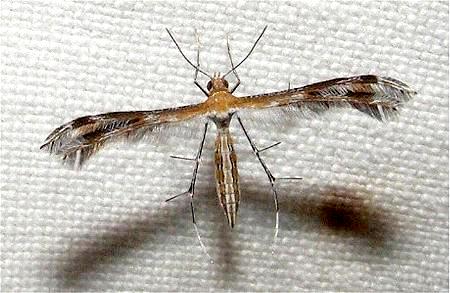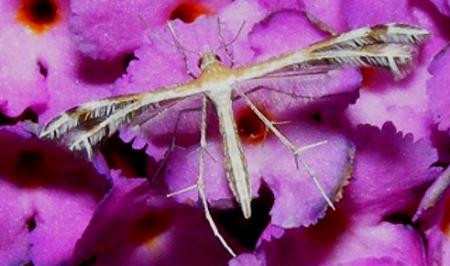
| (previously known as Trichoptilus xerodes) PTEROPHORINAE, PTEROPHORIDAE, PTEROPHORIOIDEA | (donherbisonevans@yahoo.com) and Debbie Matthews & Stella Crossley |

(Photo: courtesy of
Jenny Holmes, Great Western, Victoria)

| (previously known as Trichoptilus xerodes) PTEROPHORINAE, PTEROPHORIDAE, PTEROPHORIOIDEA | (donherbisonevans@yahoo.com) and Debbie Matthews & Stella Crossley |

(Photo: courtesy of
Jenny Holmes, Great Western, Victoria)
This Caterpillar is brown with short hairs. The back of each segment has a pair of black-tipped pale grey warts. The Caterpillars have been reported feeding on the new shoots of:

The adult moth is brown with white markings. The legs have dark lines running lengthwise. The moth has a wingspan of about 1 cm. It is a keen feeder on nectar, having a remarkably long tongue.
The species has been found in
and also over most of mainland Australia, including:
Further reading :
Ian F.B. Common,
Moths of Australia,
Melbourne University Press, 1990, figs. 30.18, 53.5, p. 333.
Edward Meyrick,
On the classification of the Pterophoridae.,
Transactions of the Entomological Society of London,
1886, pp. 14-15.
 caterpillar |  butterflies |  Lepidoptera |  moths |  caterpillar |
(updated 31 October 2012, 9 January 2025)